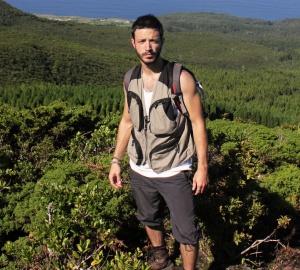Lamelas López, L. & Ferrante, M. (2021) Using camera-trapping to assess grape consumption by vertebrate pests in a World Heritage vineyard region.
Journal of Pest Science,
94, 585-590. DOI:10.1007/s10340-020-01267-x (IF2021 5,742; Q1 Entomology)
Vertebrate pests cause significant economic loss in several agricultural crops worldwide; therefore, their populations are often controlled through culling. Correctly identifying the main species responsible for the damage is essential to avoid persecuting the wrong targets, yet it is challenging. During 2016 and 2017, we tested the usefulness of camera-trapping (CT) in Terceira Island, Azores, Portugal to identify vertebrate pests. Vineyard owners in this region cull the Azores woodpigeon (Columba palumbus azorica), the common pigeon (Columba livia), the house sparrow (Passer domesticus), the Azores blackbird (Turdus merula azorensis), and the Madeira wall lizard (Teira dugesii) to reduce damage to grapes. Using CT photos and videos, we identified nine species damaging the grape, but four of those were only observed occasionally (< 10 consumption events over 2 years). The Madeira lizard (371.09 and 232.47 consumption events100-CT-days in 2016 and 2017, respectively), the house sparrow (284.01 and 21.73 consumption events100-CT-days in 2016 and 2017, respectively), and the Azores blackbird (17.35 and 8.23 consumption events100-CT-days in 2016 and 2017, respectively) had the most frequent consumption events. All three species were most active in the morning (8:00–9:00) and in the afternoon (16:00–17:00 for the Madeira lizard and the house sparrow, and 18:00–19:00 for the Azores blackbird). We demonstrated the advantage of using CT in cultivated habitats to provide valuable information about the identity, behaviour, daily-activity patterns, and relative consumption rates of vineyard pests. We also provided evidence that the endemic Azores woodpigeon and the common pigeon should not be targeted by the farmers in Terceira.


